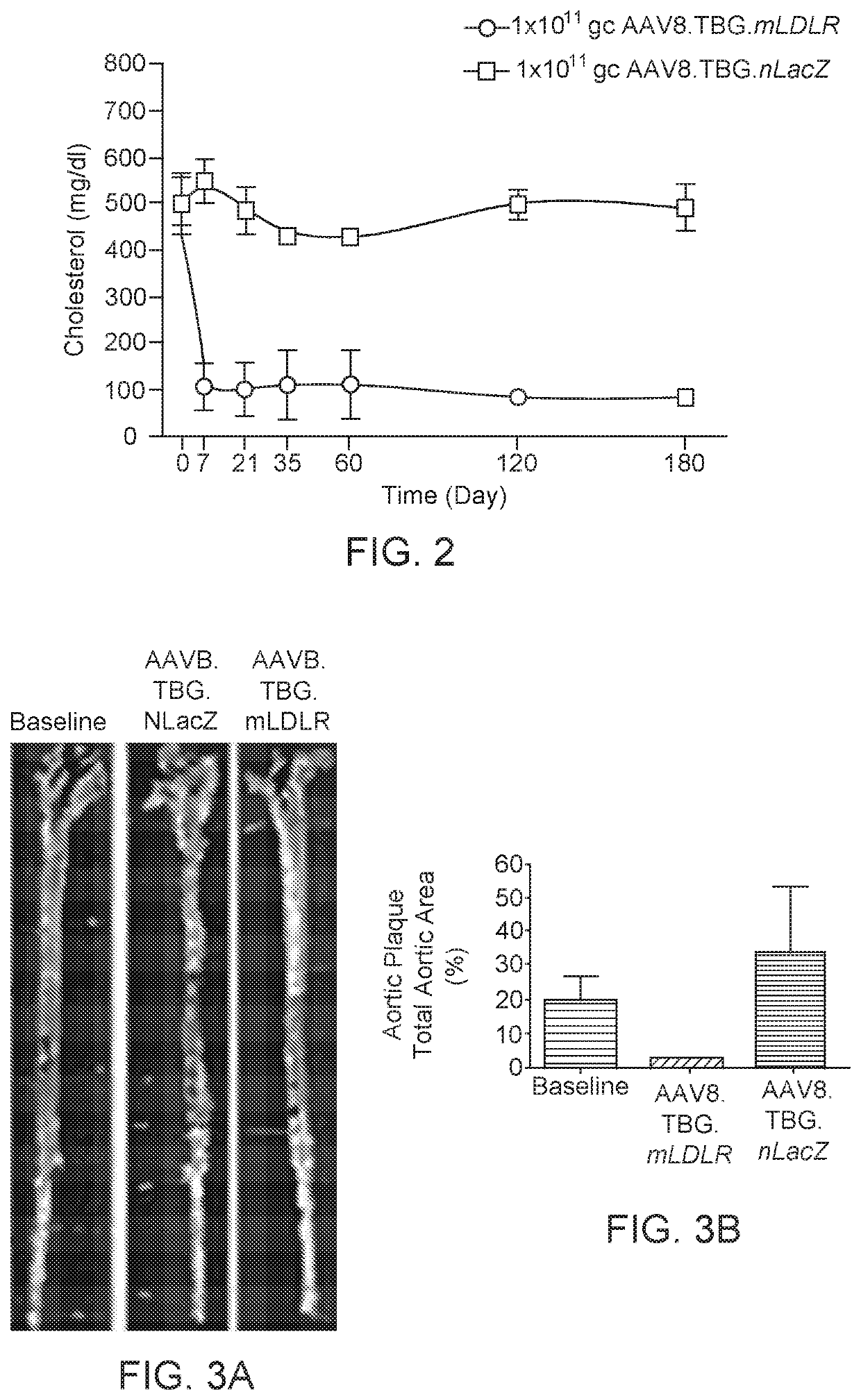Gene therapy for treating familial hypercholesterolemia
a family history and gene therapy technology, applied in the direction of genetic material ingredients, drug compositions, metabolic disorders, etc., can solve the problems of limited options, abnormal intracellular processing of proteins, and limited tolerability and drug availability,
- Summary
- Abstract
- Description
- Claims
- Application Information
AI Technical Summary
Benefits of technology
Problems solved by technology
Method used
Image
Examples
examples
6. Example 1: Protocol for Treating Human Subjects
[0105]This Example relates to a gene therapy treatment for patients with genetically confirmed homozygous familial hypercholesterolemia (HoFH) due to mutations in the low density lipoprotein receptor (LDLR) gene. In this example, the gene therapy vector, AAV8.TBG.hLDLR, a replication deficient adeno-associated viral vector 8 (AAV8) expressing hLDLR is administered to patients with HoFH. Efficacy of treatment can be assessed using Low density lipoprotein cholesterol (LDL-C) levels as a surrogate for transgene expression. Primary efficacy assessments include LDL-C levels at about 12 weeks post treatment, with persistence of effect followed thereafter for at least 52 weeks. Long term safety and persistence of transgene expression may be measured post-treatment in liver biopsy samples.
[0106]6.1. Gene Therapy Vector
[0107]The gene therapy vector is an AAV8 vector expressing the transgene human low density lipoprotein receptor (hLDLR) under...
example 3
8. Manufacture of AAV8.TBG.hLDLR
[0227]The AAV8.TBG.hLDLR vector consists of the AAV vector active ingredient and a formulation buffer. The external AAV vector component is a serotype 8, T=1 icosahedral capsid consisting of 60 copies of three AAV viral proteins, VP1, VP2, and VP3, at a ratio of 1:1:18. The capsid contains a single-stranded DNA recombinant AAV (rAAV) vector genome (FIG. 7). The genome contains a human low density lipoprotein receptor (LDLR) transgene flanked by the two AAV inverted terminal repeats (ITRs). An enhancer, promoter, intron, human LDLR coding sequence and polyadenylation (polyA) signal comprise the human LDLR transgene. The ITRs are the genetic elements responsible for the replication and packaging of the genome during vector production and are the only viral cis elements required to generate rAAV. Expression of the human LDLR coding sequence is driven from the hepatocyte-specific thyroxine-binding globulin (TBG) promoter. Two copies of the alpha 1 microg...
PUM
| Property | Measurement | Unit |
|---|---|---|
| pH | aaaaa | aaaaa |
| ionic strength | aaaaa | aaaaa |
| pH | aaaaa | aaaaa |
Abstract
Description
Claims
Application Information
 Login to View More
Login to View More - R&D
- Intellectual Property
- Life Sciences
- Materials
- Tech Scout
- Unparalleled Data Quality
- Higher Quality Content
- 60% Fewer Hallucinations
Browse by: Latest US Patents, China's latest patents, Technical Efficacy Thesaurus, Application Domain, Technology Topic, Popular Technical Reports.
© 2025 PatSnap. All rights reserved.Legal|Privacy policy|Modern Slavery Act Transparency Statement|Sitemap|About US| Contact US: help@patsnap.com



